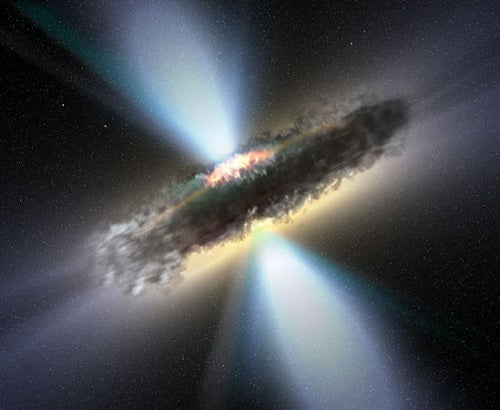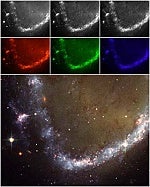Volcanic eruptions on a timer?
Volcanoes erupt on a seasonal cycle, according to a team of scientists from Cambridge University. The team, led by B. G. Mason, studied records of more than 3,200 eruptions around the world during the past three centuries before drawing this conclusion. Data indicate a peak rate of eruptions when regional sea levels and atmospheric pressure are falling, between February and March in the Northern Hemisphere and between August and September in the Southern Hemisphere.
This phenomenon is particularly well documented along the Pacific “Ring of Fire,” including Central and South America and some Japanese islands. A similar seasonal pattern has been documented for a few individual volcanoes, including Sakura-jima in Japan and Semeru in Java, Indonesia.
Initially, the team compared dates of volcanic eruptions with lunar tides to explain the pattern. They found no correlation between the two, however, concluding that such an effect is too short-lived to impact tectonics. Instead, the team proposes that a combination of factors, “a host of periodic processes,” is responsible. Principally, they cite the annual hydrological cycle, the circulation of water from evaporation to condensation to precipitation, as significant. Seasonal changes in snowpack thickness and soil moisture, for example, induce changes in Earth’s crust. The team’s work was published in the Journal of Geophysical Research on April 27. — Laura Baird
Researchers have uncovered the first direct evidence of global
cooling following the impact of a meteorite that scientists believe caused the mass extinction of dinosaurs and other life forms 65 million years ago. By analyzing fossils of marine life preserved in El Kef, Tunisia, the team, led by Simone Galeotti of the Università di Urbino, Italy, determined that at the Cretaceous-Tertiary boundary, cold-loving organisms inhabited previously warm waters.
Scientists believe the meteoric impact at Chicxulub in Mexico created a cloud of Sun-blocking aerosols in Earth’s atmosphere, inducing a so-called impact-winter that lasted anywhere from 2 to 12 years. Surface temperatures may have dipped by as much as 54° Fahrenheit (12° Celsius) in the impact’s immediate aftermath, but the surface climate appears to have recovered within a century. Water temperatures, however, were much slower to come around. The team found that as long as 2,000 years may have passed before ocean temperatures returned to pre-impact levels.
The team’s results were published in the June 2004 issue of the journal Geology.
— Laura Baird
Black hole filling
An international team of scientists using two orbiting observatories has found more evidence that massive black holes are surrounded by donut-shaped clouds of gas and dust. With INTEGRAL and XMM-Newton, scientists looked edge-on into a gas cloud, called a torus, surrounding a black hole in the spiral galaxy NGC 4388, about 65 million light-years away. The team, led by Volker Beckmann (NASA Goddard Space Flight Center), saw how different processes around the black hole produce light at different wavelengths, but it is still unclear how the torus formed. The results of the study will be published in an upcoming edition of The Astrophysical Journal.
“This torus is not as dense as a Krispy Kreme donut,” says Beckmann, “but it is far hotter — up to a thousand degrees — and loaded with many more calories.” — Pamela Zerbinos
Researchers have discovered a piece of the Red Planet on Earth’s most inhospitable continent — Antarctica. A field party from the U.S. Antarctic Search for Meteorites program (ANSMET) found the specimen roughly 466 miles (750 km) from the South Pole. The meteorite, a 1.6-pound black rock, has been designated MIL 03346 and is the seventh recognized member of a group of martian meteorites dubbed “nakhlites,” after the first known specimen that fell in Nakhla, Egypt, in 1911. Nakhlites are thought to have originated within thick lava flows that crystallized on Mars some 1.3 billion years ago, and are among the older known martian meteorites.
Studying MIL 03446 can provide a critical reality check for interpreting the data returned by the Mars Expedition Rovers currently exploring the Red Planet. Scientists from around the world will be invited to request samples of the new specimen for their own research.
— Pamela Zerbinos
Astronomers have directly measured the mass of a solitary star, marking the first time such a measurement has been made on a star other than our own Sun. Stellar mass is important in understanding a star’s evolution, but until now, scientists could determine the masses of stars only in binary systems. To do this, they had to apply Newton’s laws of gravity to measurements of the stars’ orbits. Now, a team led by Andrew Gould (Ohio State) has used the theory of relativity and the Hubble Space Telescope to measure a small red star some 1,800 light-years from Earth. The star garnered attention as part of an unusual astronomical event witnessed by the Massive Compact Halo Objects (MACHO) collaboration in 1993, and astronomers realized they could combine old and new techniques to measure its mass. It’s about one-tenth of the mass of the Sun. The results were published this month in The Astronomical Journal. — Pamela Zerbinos
Split personality
The color variations in the recent Cassini images of the saturnian moon Iapetus are not due to shadowing, as might be expected — they’re real. The leading hemisphere of the “yin-yang moon” is always very dark, reflecting only around 4 percent of the light that hits it, while the trailing hemisphere is shockingly bright, reflecting as much as 50 percent of its light. Scientists do not yet understand the cause of the color variations, but Cassini is scheduled to do two flybys of the moon during the spacecraft’s 4-year tour. The latest image was taken in visible light with Cassini’s narrow angle camera on July 3, 2004, from 1.8 million miles (3 million kilometers) away. — Pamela Zerbinos
Dusty Uranian ring first seen from Earth
The rings of Uranus are dark and slender, unlike those of other ringed planets in the solar system. Now, a team of researchers has identified a thin sheet of material in the Uranian ring system. Imke de Pater (University of California, Berkeley), Heidi Hammel (Space Science Institute), and Seran Gibbard (Lawrence Livermore National Laboratory, imaged the sheet using the Keck II Telescope atop Mauna Kea, Hawaii.
The dust sheet begins about 21,750 miles (35,000 kilometers) from the center of Uranus and ends at a distance of 25,475 miles (41,000 km). This places the sheet inside rings 4, 5, and 6, although it is not connected to them. Planetary scientists believe the dust sheet is 1986 U 2R, a faint ring discovered by Voyager in 1986. The discovery marks its first detection by a ground-based telescope.— Jeremy McGovern
FITS freedom
Archival images from top-notch astronomical instruments have been available over the Internet for some time. Scientists take the individual black-and-white images, shot through different filters, and artfully combine them into beautiful space pictures. Although the files are available, anyone interested in making color images has had to overcome a substantial hurdle: the FITS format in which the images are stored. FITS, short for File Image Transfer Software, is used to archive nearly all images produced by major telescopes around the world. Outside of scientists, few people have had access to the specialized software needed to read FITS images.
Now, scientists at NASA, the European Space Agency (ESA), and the European Southern Observatory (ESO) have developed free software that allows anyone to read the format. Called the Photoshop FITS Liberator, the software works as a “plug-in” for Adobe® Photoshop® or Adobe Photoshop Elements and can be used by anyone using Photoshop on a Windows or Macintosh desktop computer. Craft your own astronomical images from data taken by the Hubble and Spitzer Space Telescopes, the ESO’s Very Large Telescope, the ESA’s XMM-Newton X-Ray Observatory, and many other famous instruments. You can download the Photoshop FITS Liberator here. — Francis Reddy
Old galaxies, young universe
A glimpse into the early days of our universe has revealed mature, fully formed galaxies where researchers expected to find only newborns. The Gemini Deep Deep Survey (GDDS) collected and analyzed spectra from three hundred galaxies in the “Redshift Desert,” traditionally a cosmological blind spot. This era, 8 to 11 billion years ago, when the universe was between 3 and 6 billion years old, has remained relatively unexplored because of the difficulty of data collection. The GDDS team, led by Karl Glazebrook (Johns Hopkins University), found several highly developed, massive galaxies, contradicting the dominant theory of galactic evolution, which says galaxies should form from the bottom up. This process takes billions of years, and if accurate, the galaxies found by GDDS would not have had time to form. “There are obviously some aspects of the early lives of galaxies that we don’t yet completely understand,” says Glazebrook. The team’s results appear in the July 8 issue of the journal Nature. — Pamela Zerbinos
No flux, no fear
Earth’s magnetic field protects life on the planet from interstellar cosmic rays and high-energy particles in the solar wind. But the orientation of Earth’s magnetic dipole has flipped hundreds of times in the past 400 million years. What’s more, the strength of the field has been decreasing by 5 percent every century — by far its fastest fall since the last magnetic reversal 73,000 years ago.
The transition from one magnetic orientation to another takes thousands of years, with magnetic north gradually changing to magnetic south. The bar-magnet-like dipole configuration we’re accustomed to disappears, replaced by an unstable field of no clear shape and weakened to as little as 10 percent of its average value. So if Earth is headed for another reversal, as it appears to be, what will happen to life on Earth when our magnetic shield goes down?
An investigation by three German scientists shows that not much would change even if Earth’s magnetic field completely disappeared. G. T. Birk and H. Lesch (Institute for Astronomy and Astrophysics, Munich) and C. Konz (Max-Planck-Institute for Plasma Physics, Garching) found that even an unmagnetized Earth could develop a magnetic field as strong as its present one.
Magnetic field lines carried by the solar wind interact with Earth’s ionosphere and drape around the planet, a phenomenon seen at Venus and around comets. More important, they found that the relative motion between the solar wind and the ionosphere causes the ionosphere to generate its own magnetic field, one with a strength comparable to the one we enjoy now. “Consequently, even in the case of a complete breakdown of the Earth’s dynamo, the biosphere is still shielded . . . by the magnetic field induced by the solar wind,” they conclude. Their work was published in the June III issue of Astronomy & Astrophysics. — Francis Reddy












